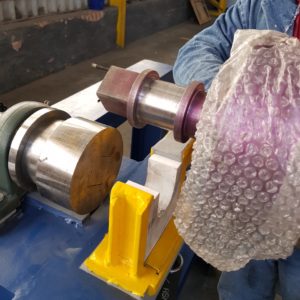
The fabric roll shaft rests on a Vesconite Hilube support bearing.
Dam linings, billboards, butchery aprons, and many others are just some of the items that Arthur Dowson (Pty) Ltd. will start producing at the end of October in Johannesburg, South Africa. The laminating and coating factory is establishing a production line that will be introducing Vesconite Hilube support bearings for its fabric roll shaft.
Arthur Dowson maintenance manager Roy Rodgers reports that the company had previously used Teflon and nylon support bearings before switching to Vesconite, a self-lubricating high-load-bearing polymer.
Vesconite proved to have increased wear resistance compared to alternatives which tended to be ground down by the rolling action that they were exposed to, he says.
Upon deciding to re-establish the laminating and coating factory, after a temporary closure and relocation of equipment to elsewhere, Arthur Dowson made the decision to change to Vesconite Hilube, the more advanced version of the polymer Vesconite that has a lower coefficient of friction and requires less lubrication.
Rodgers explains that, at the start of the production process, the fabric roll shaft, with the raw material around it, will rest on a new support bearing.
This curtain-like material will roll off the fabric shaft at 12m/min and then be coated with an anchor coat, or bonding coat before it receives a top coat that is set in an oven.
Once it has received the coatings on the one side, the material is rolled onto another fabric roll shaft that is supported at the other end of the production line with more of the support bearings.
1000m of the roll is typically transported back to the start of the production line so that the reverse of the material can also be coated.
The process is then repeated, and the roll of fabric gains in weight and volume as it receives additional coatings.
Rodgers reports that the fabric rolls can weigh up to 2t after coating, with some clients requiring more coatings that result in an even greater fabric weight.
The decision to use the current plain support bearing design was motivated by the fact that roller bearings have to be removed with the fabric shaft, while the current design, which is a block shape with an open end that allows the fabric shaft to be lowered onto it and move on it, is a simpler easier-to-operate design, explains Vesconite Bearings mechanical engineer Juan van Wyk.
For Arthur Dowson, the bearings also allow easy cleaning, since the polymers are resistant to many acids and alkalis, including acetone, paraffin, and turpentine.
Rodgers reports that the material coating company lubricated the previous support bearings to reduce wear and is likely to continue the practice with the Vesconite Hilube support bearings.
Wear becomes particularly important on the support bearings at the end of the production line, since the coupling of the drive-end attachment and the material shaft have a small range of engagement, he says.
Rodgers reports that the company had three production lines running 24 hours a day previously and that the coating firm will expand according to need following the successful reimplementation of an initial production line.
Vesconite Bearings
www.vesconite.com
Filed Under: Bearings

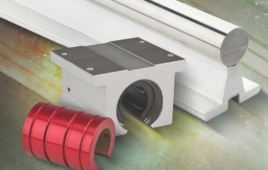
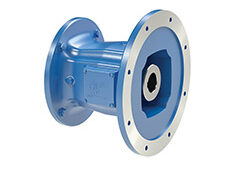
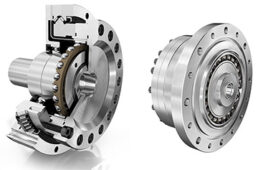
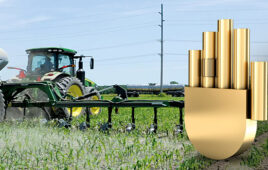
Tell Us What You Think!